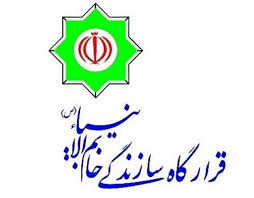Overview

The Iranian regime controls a vast business empire which has increasingly come under the control of the Islamic Revolutionary Guard Corps (IRGC) since the presidency of Mahmoud Ahmadinejad. Established by Ayatollah Khomeini in the months following the February 1979 Islamic Revolution, the 1980-1988 Iran-Iraq War witnessed the transformation of the IRGC from a hastily-organized militia into one of Iran’s most powerful institutions. The IRGC emerged from the crucible of the war as a formidable fighting force with considerable organizational and engineering prowess.
As the Iranian government reduced military expenditures and sought to rebuild after the war, the IRGC’s construction and engineering wing, Khatam al-Anbiya (“seal of the Prophets”), moved into civilian enterprises, expanding its influence and economic portfolio as it took on lucrative post-war reconstruction projects. This process accelerated during Ahmadinejad’s tenure, as Khatam al-Anbiya was the beneficiary of a succession of huge no-bid contracts, rendering the organization and its complex web of subsidiaries as the dominant players in Iran’s construction, energy, automobile manufacturing, and electronics sectors. Fueled by Khatam al-Anbiya’s profits, the IRGC has taken on an outsized role in the militarization of Iran’s economy and the organization effectively operates as a state within a state, accountable only to Supreme Leader Khamenei. Reflecting the IRGC’s growing influence in Iran’s oil and gas industry, Khatam al-Anbiya has served as a recruiting pool for top talent for the government of the Islamic Republic of Iran. IRGC commander and former Khatam al-Anbia head Rostam Ghasemi was appointed as Iran’s Minister of Petroleum in August 2011.
Revolutionary Activities Abroad
The IRGC is a key player in Iran’s project to spread the Islamic Revolution beyond its borders. It primarily acts militarily to achieve these aims, utilizing the Quds Force, its foreign expeditionary arm, to support terrorist proxies and subversive activities throughout the Middle East.
Khatam al-Anbiya offers another, subtler avenue for the IRGC to expand Iran’s influence around the globe by constructing dams and pursuing other development-oriented projects abroad. According to Iranian newspaper the Financial Tribune in 2014, Iran is the world’s third leading nation in dam construction behind China and Japan, operating projects in forty countries. The Iranian firms engaged in hydroelectric projects in Latin America, Central Asia, and the Middle East “without exception fall under the rubric of Khatam al-Anbia, the economic wing of the Islamic Revolutionary Guard Corps (IRGC),” according to Michael Rubin of the American Enterprise Institute.
Khatam al-Anbiya’s participation in building dams and related infrastructure projects serves numerous Iranian objectives. Iran utilizes development assistance in a targeted fashion to curry favor with nations voting in key multilateral fora, such as non-permanent members of the U.N. Security Council or International Atomic Energy Agency’s Board of Governors. Additionally, Iran can use these projects to covertly project influence, as Rubin speculates that “the dam construction can provide a means to insert IRGC members into areas where they could, in theory, conduct surveillance or support other operations.”
Lebanon’s northern Sunni and Christian regions are an area where Iran has tried, unsuccessfully thus far, to pursue “dam diplomacy.” Seeking to bolster its standing in Lebanon as a hedge against the potential fall of Syria’s Assad regime, Iran offered in 2011 to contribute $40 million to the construction of a dam in the Christian city of Tannourine. The plan met resistance, however, from Lebanese Christians weary of Iran’s perceived sectarian agenda. “We don’t have confidence in Iranian economic aid; we consider it part of a political, security military project,” said Sejaan M. Azzi, vice president of the Phalange Party, discussing the project. Tannourine’s mayor, Mounir Tarabay said, "The donation was on condition that an Iranian company carries out the work. If they come here, they'll establish their own community, which means that they will establish a colony in this purely Christian area and we don't want this to happen."
Iran has also sought to bolster its strategic depth by expanding its influence westward into Central Asia, competing with Russia and Saudi Arabia for cultural and political cache. Iran’s efforts have centered largely around Tajikistan, which has proven eager to boost its ties with Iran due to its standing as the poorest former Soviet republic and its natural cultural affinity with Iran. Ethnic Tajiks, which comprise 80% of the population of Tajikistan, are Persian-speaking people of Iranian origin. Iran has invested in and developed numerous construction projects in Tajikistan, including a $260 million hydroelectric power plant and a power plant and dam capable of generating 130 megawatts per hour of electricity. These Iranian projects have contributed to shoring up a “Persian axis” between Iran, Afghanistan, and Tajikistan, and Iran is now engaged in building dams in Kyrgyzstan, Armenia, and Azerbaijan as well.